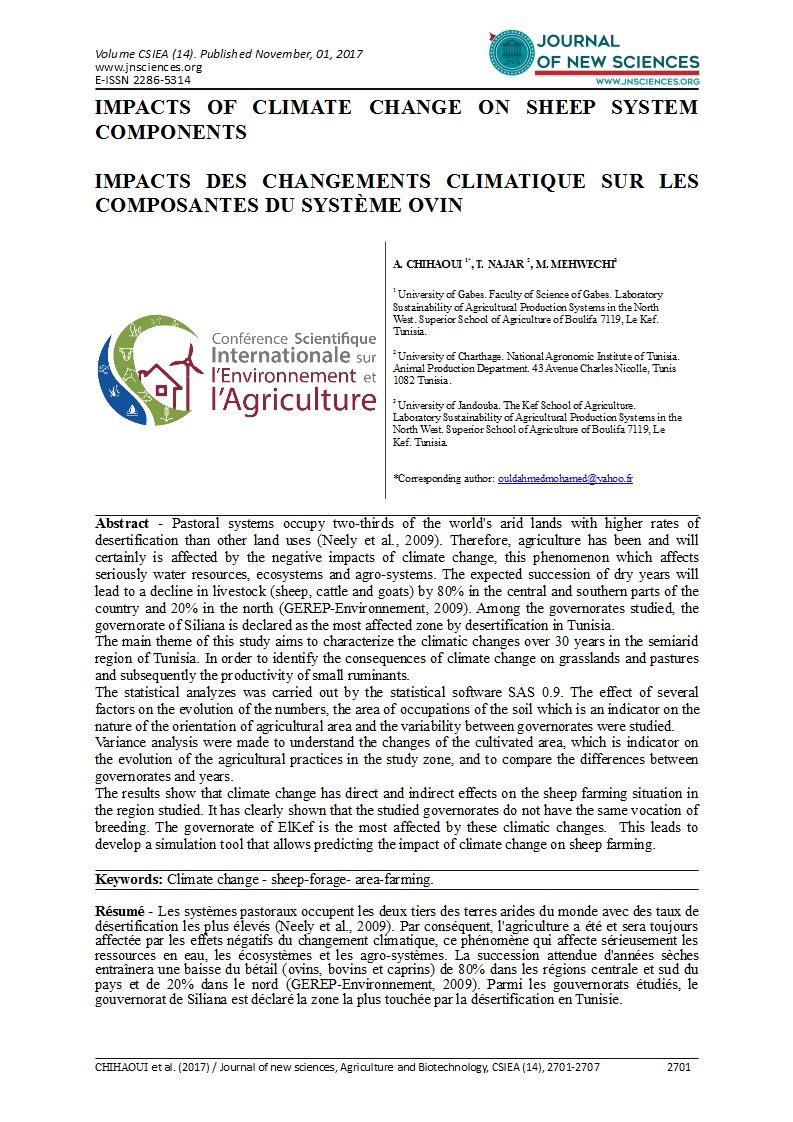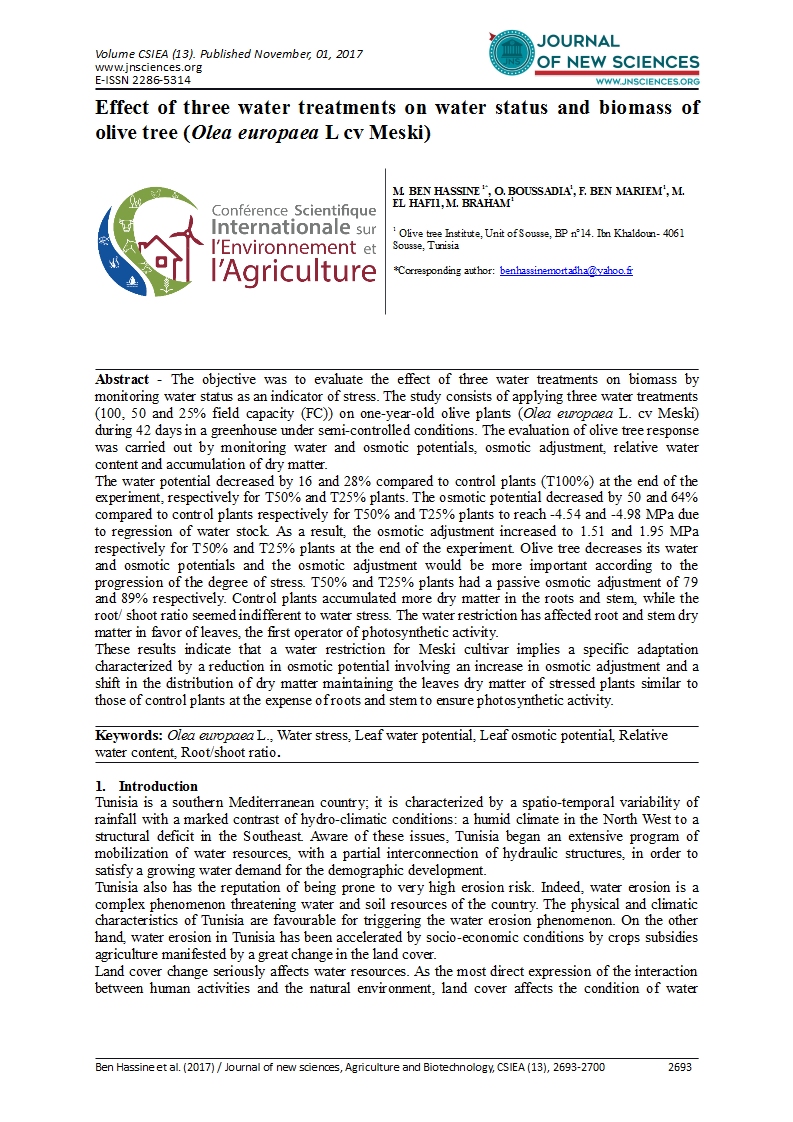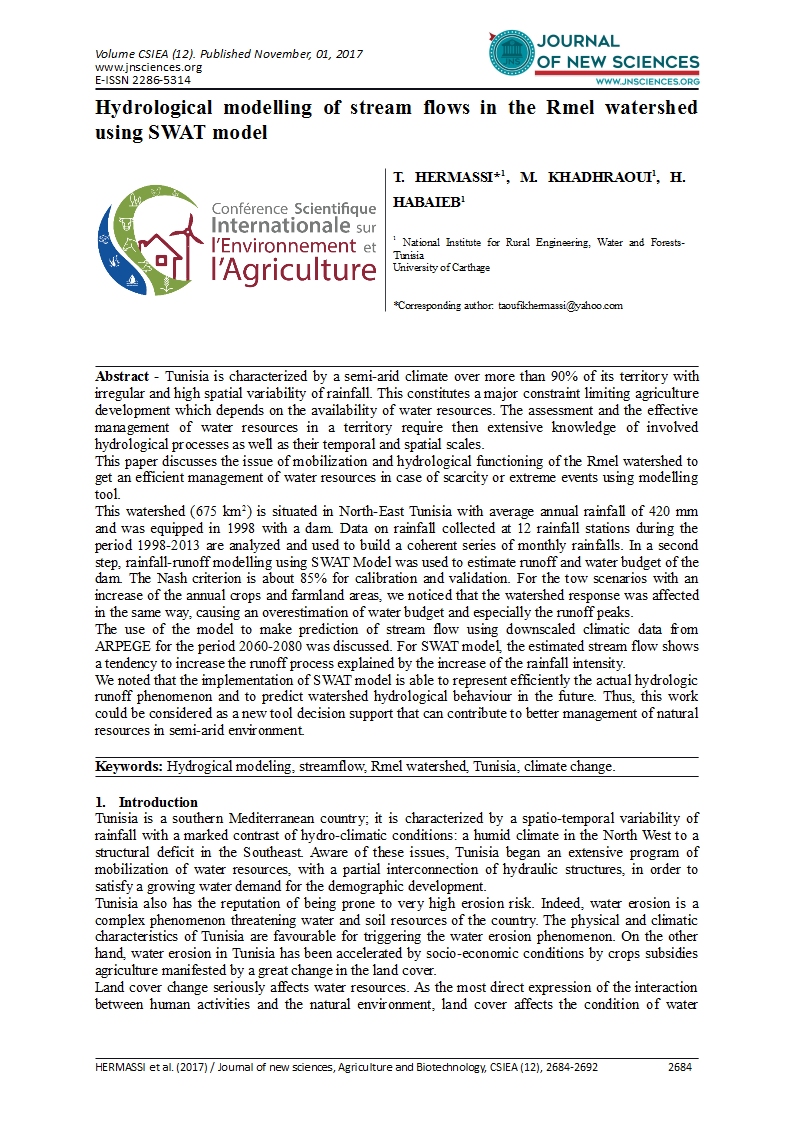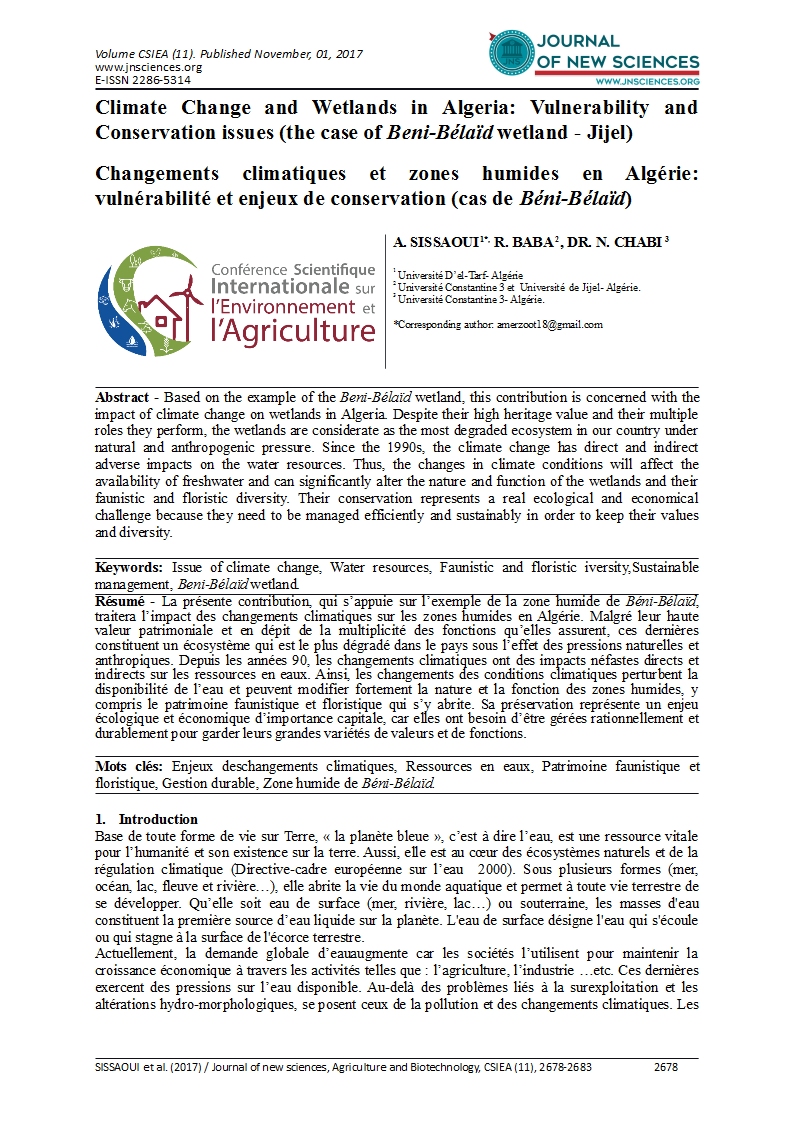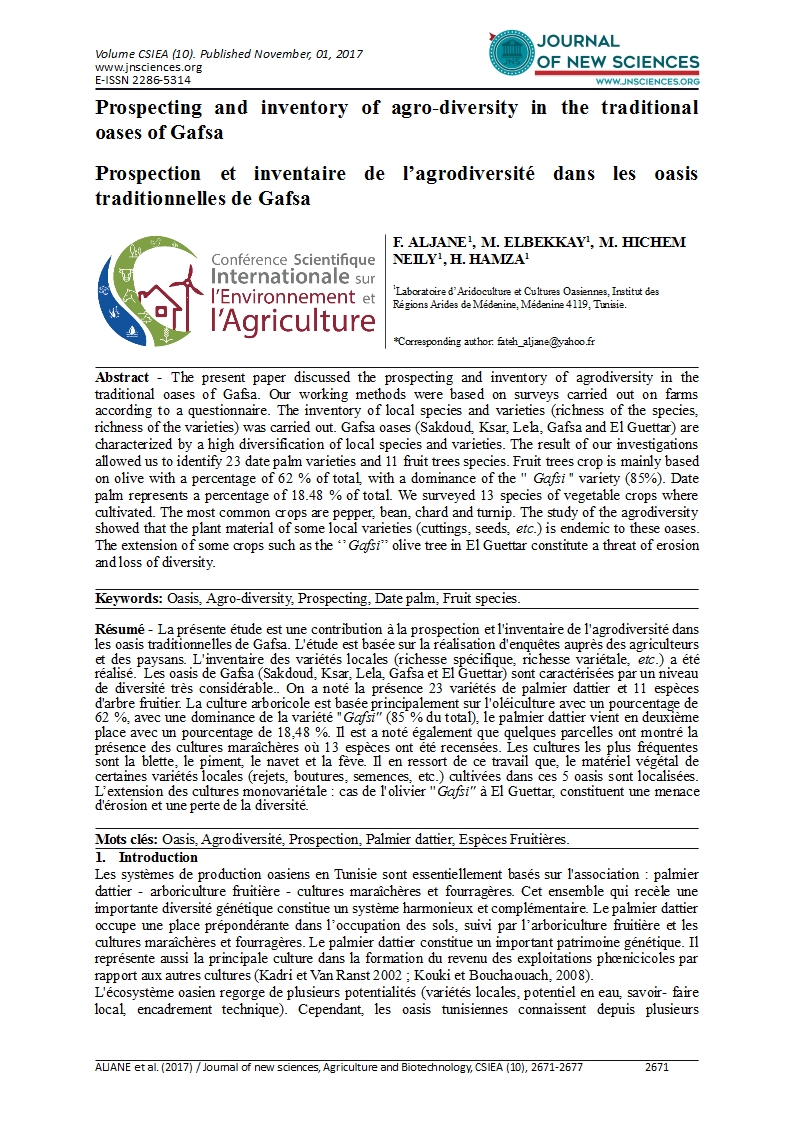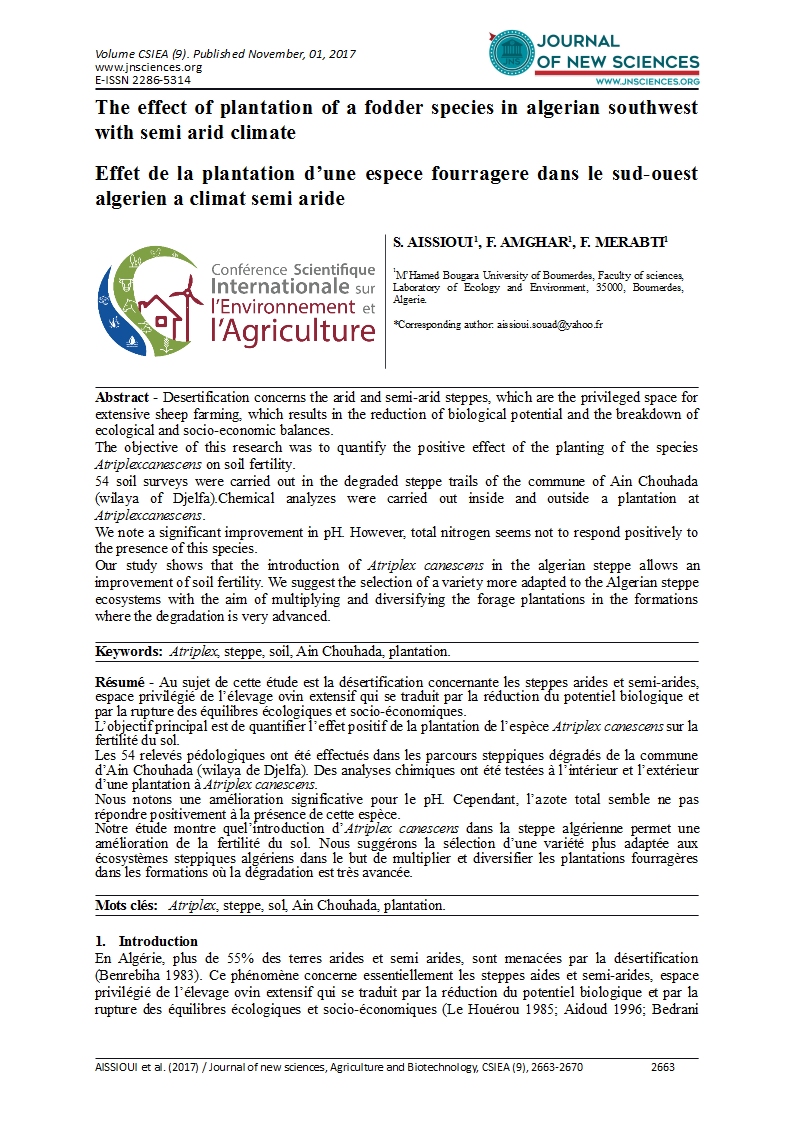- Category: Volume spécial (Conférence CSIEA 2017)
- Hits: 6352
Study of the transformations and the durability of the hydro-agricultural systems in the Mounts of Matmata: case of catchment area of Oued Bou Satour
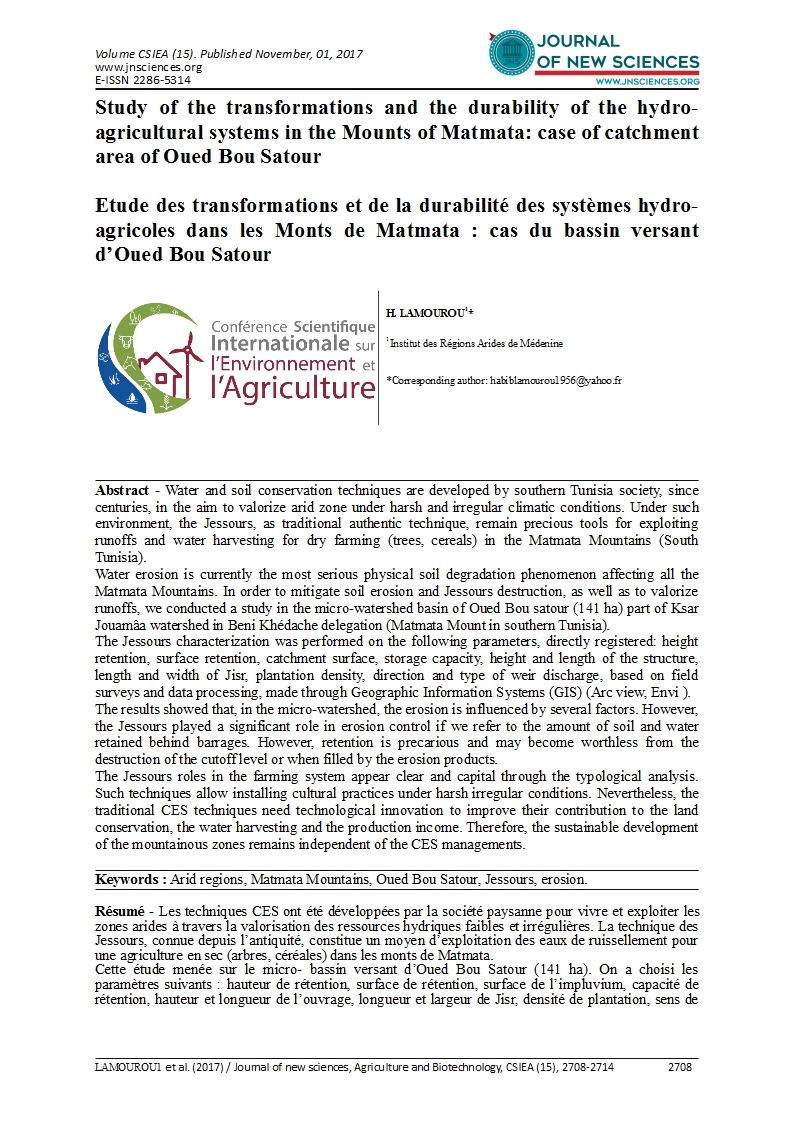
Etude des transformations et de la durabilité des systèmes hydro-agricoles dans les Monts de Matmata : cas du bassin versant d’Oued Bou Satour
|
|
H. LAMOUROU1*
1Institut des Régions Arides de Médenine |
Abstract - Water and soil conservation techniques are developed by southern Tunisia society, since centuries, in the aim to valorize arid zone under harsh and irregular climatic conditions. Under such environment, the Jessours, as traditional authentic technique, remain precious tools for exploiting runoffs and water harvesting for dry farming (trees, cereals) in the Matmata Mountains (South Tunisia). Water erosion is currently the most serious physical soil degradation phenomenon affecting all the Matmata Mountains. In order to mitigate soil erosion and Jessours destruction, as well as to valorize runoffs, we conducted a study in the micro-watershed basin of Oued Bou satour (141 ha) part of Ksar Jouamâa watershed in Beni Khédache delegation (Matmata Mount in southern Tunisia). The Jessours characterization was performed on the following parameters, directly registered: height retention, surface retention, catchment surface, storage capacity, height and length of the structure, length and width of Jisr, plantation density, direction and type of weir discharge, based on field surveys and data processing, made through Geographic Information Systems (GIS) (Arc view, Envi ). The results showed that, in the micro-watershed, the erosion is influenced by several factors. However, the Jessours played a significant role in erosion control if we refer to the amount of soil and water retained behind barrages. However, retention is precarious and may become worthless from the destruction of the cutoff level or when filled by the erosion products. The Jessours roles in the farming system appear clear and capital through the typological analysis. Such techniques allow installing cultural practices under harsh irregular conditions. Nevertheless, the traditional CES techniques need technological innovation to improve their contribution to the land conservation, the water harvesting and the production income. Therefore, the sustainable development of the mountainous zones remains independent of the CES managements.
Keywords : Arid regions, Matmata Mountains, Oued Bou Satour, Jessours, erosion.

